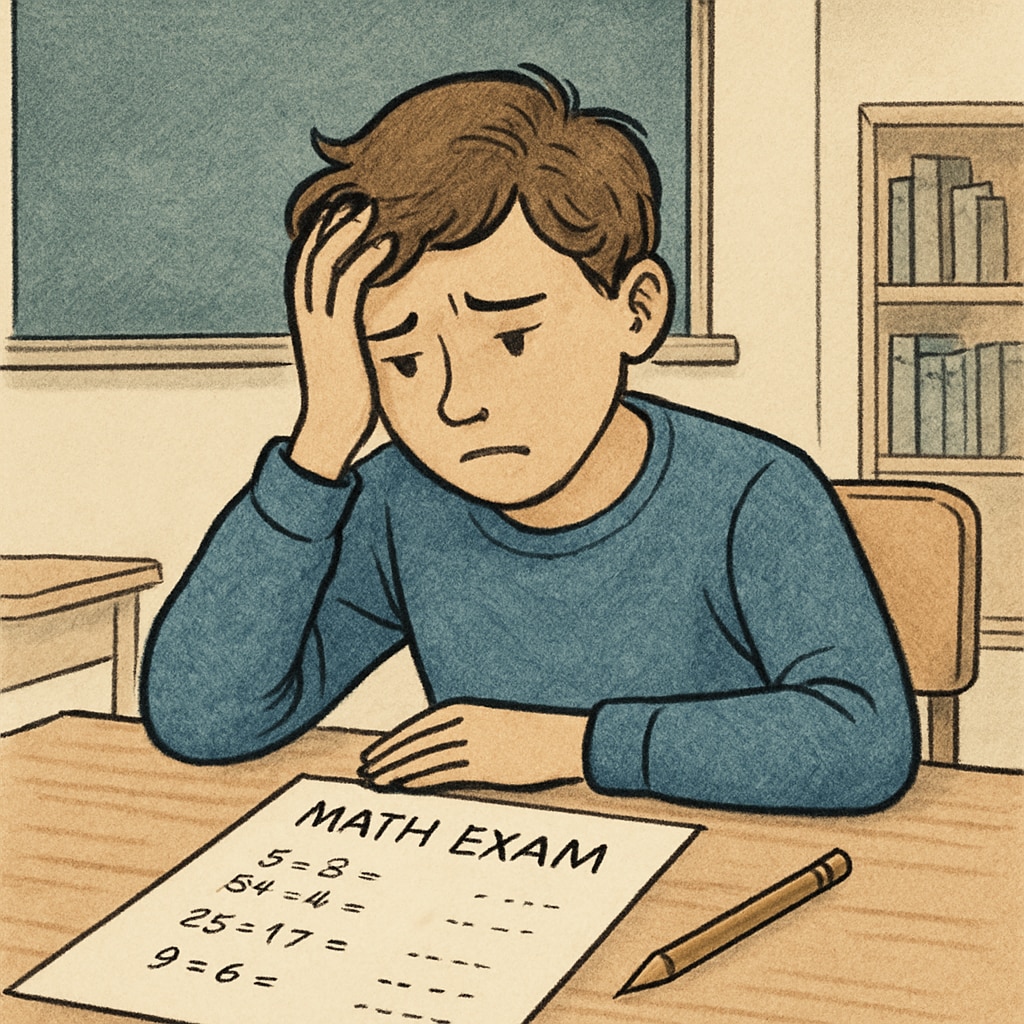Math anxiety, particularly when it comes to multiple-choice questions, is a challenge that many high school students face. This hidden obstacle can lead to decreased performance, heightened stress, and a lasting fear of math-related subjects. In this article, we’ll explore the psychological mechanisms behind math anxiety and provide actionable strategies to overcome it, all through the lens of a 17-year-old transfer student’s journey.
Understanding the Roots of Math Anxiety
Math anxiety isn’t just about disliking numbers or equations—it’s a genuine psychological phenomenon. It often stems from early negative experiences, high expectations, or a fear of failure. Multiple-choice questions can amplify this anxiety because they require precision and leave no room for partial credit. Students may feel overwhelmed by the possibility of selecting more than one correct answer, which adds another layer of complexity.
For example, Sarah, a 17-year-old who recently transitioned to a more competitive high school, found herself struggling with math. She described the multiple-choice section as a “mental minefield,” where every decision felt like a potential mistake. This fear led to second-guessing and, ultimately, lower scores.

Turning Fear into Focus: Practical Strategies for Multiple-Choice Success
Overcoming math anxiety requires a combination of mindset shifts and targeted techniques. Here are some strategies to help students like Sarah regain confidence:
- Practice Mindfulness: Techniques like deep breathing or progressive muscle relaxation can help calm the mind before and during exams.
- Understand the Question: Take the time to carefully read each question and identify what it is asking. Highlight keywords to stay focused.
- Eliminate Incorrect Options: Narrowing down choices can make the final decision less daunting.
- Trust Your Instincts: Avoid overanalyzing. Often, your initial choice is the correct one.
- Simulate Exam Conditions: Practice with timed quizzes to build familiarity and reduce surprise during the actual test.
By incorporating these steps, Sarah began to approach multiple-choice questions with a calm and focused mindset. Her practice sessions not only improved her accuracy but also boosted her overall confidence in math.
Rebuilding Confidence: Why Mindset Matters
Confidence plays a critical role in overcoming math anxiety. A positive mindset can reshape how students perceive challenges. Instead of viewing multiple-choice questions as traps, students can see them as opportunities to demonstrate their knowledge.
For Sarah, cognitive restructuring (a process of replacing negative thoughts with positive ones) was a game-changer. She replaced “I’ll never get this right” with “I’m prepared, and I’ll do my best.” Over time, this shift reduced her anxiety and improved her performance.
Additionally, seeking support from teachers, peers, or counselors can make a significant difference. Open conversations about struggles can lead to valuable advice and encouragement.

As Sarah’s story illustrates, it’s possible to transform math anxiety into a sense of mastery and control. By addressing the psychological roots, implementing practical strategies, and fostering a positive mindset, students can tackle multiple-choice questions—and math exams as a whole—with confidence.
Readability guidance: In this article, we’ve used short, digestible paragraphs and included practical tips to ensure clarity. Transition words like “for example,” “as a result,” and “in addition” guide readers smoothly through the content. Lists are used to summarize key points effectively.


